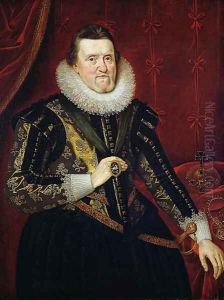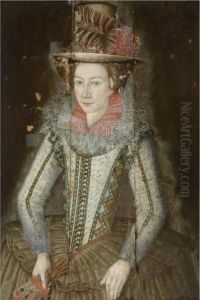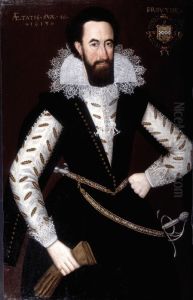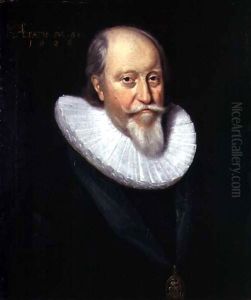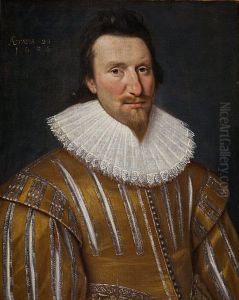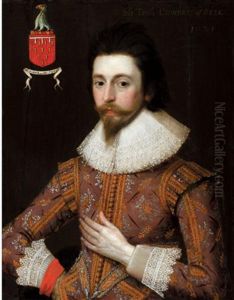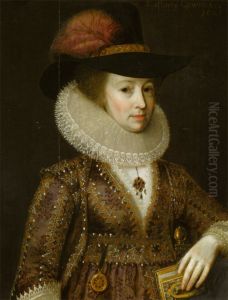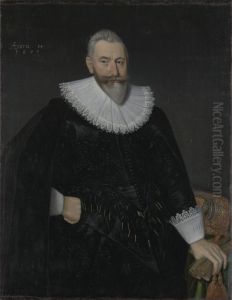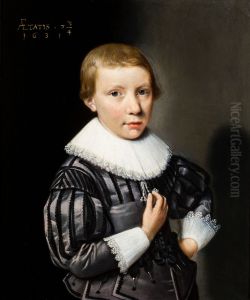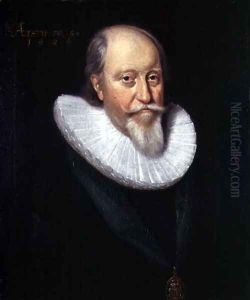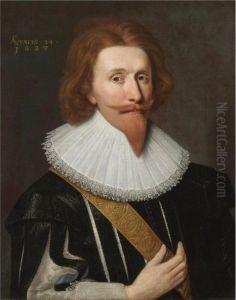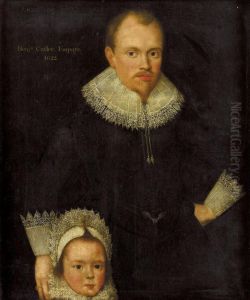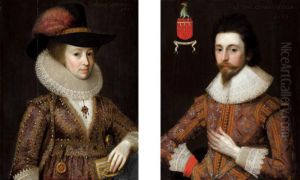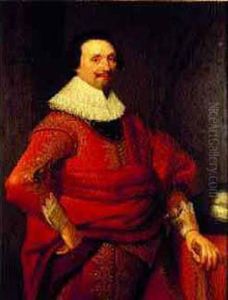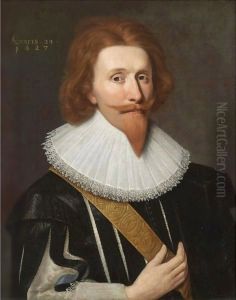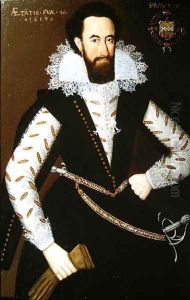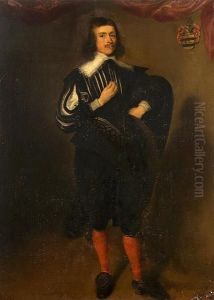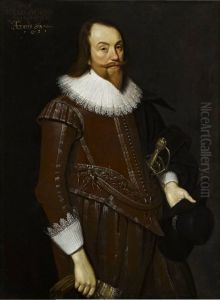Adam de Colone Paintings
Adam de Colone, also known as Adam de Cologne, was a Scottish-Dutch portrait painter who was active in the late 16th and early 17th centuries. Born around 1572, Adam was part of the de Colone family of artists; his father, Adrian Vanson, was a court painter to James VI of Scotland, and his grandfather, Colyn de Colone, was also a respected artist.
Adam de Colone's early life is not well-documented, but it is believed that he was trained by his father in the art of painting. He likely acquired a blend of Flemish and Scottish influences in his style due to his family background and the artistic environment he was exposed to. Adam is known to have worked in Scotland, and his works were particularly sought after by the Scottish nobility and gentry. His portraits are characterized by a strong sense of realism and attention to detail, particularly in the depiction of fabrics and textures.
One of his most notable works is the portrait of George Heriot, the famous Scottish goldsmith, and philanthropist. This painting is a testament to de Colone's skill in capturing the character and status of his sitters. Another significant work attributed to him is the portrait of Sir James Scrymgeour of Dudhope, which showcases his ability to convey the power and dignity of his subjects.
De Colone's career benefited from the patronage of influential figures of his time, which provided him with stability and recognition. His portraits remain a valuable record of the faces of Scotland's elite during the Jacobean era.
Adam de Colone died in 1628, leaving behind a legacy of work that continues to be appreciated for its contribution to British portraiture and its insight into the cultural and social milieu of early 17th-century Scotland. His art is a testament to the rich exchange of styles and techniques between the Northern European and British art scenes of the period.
